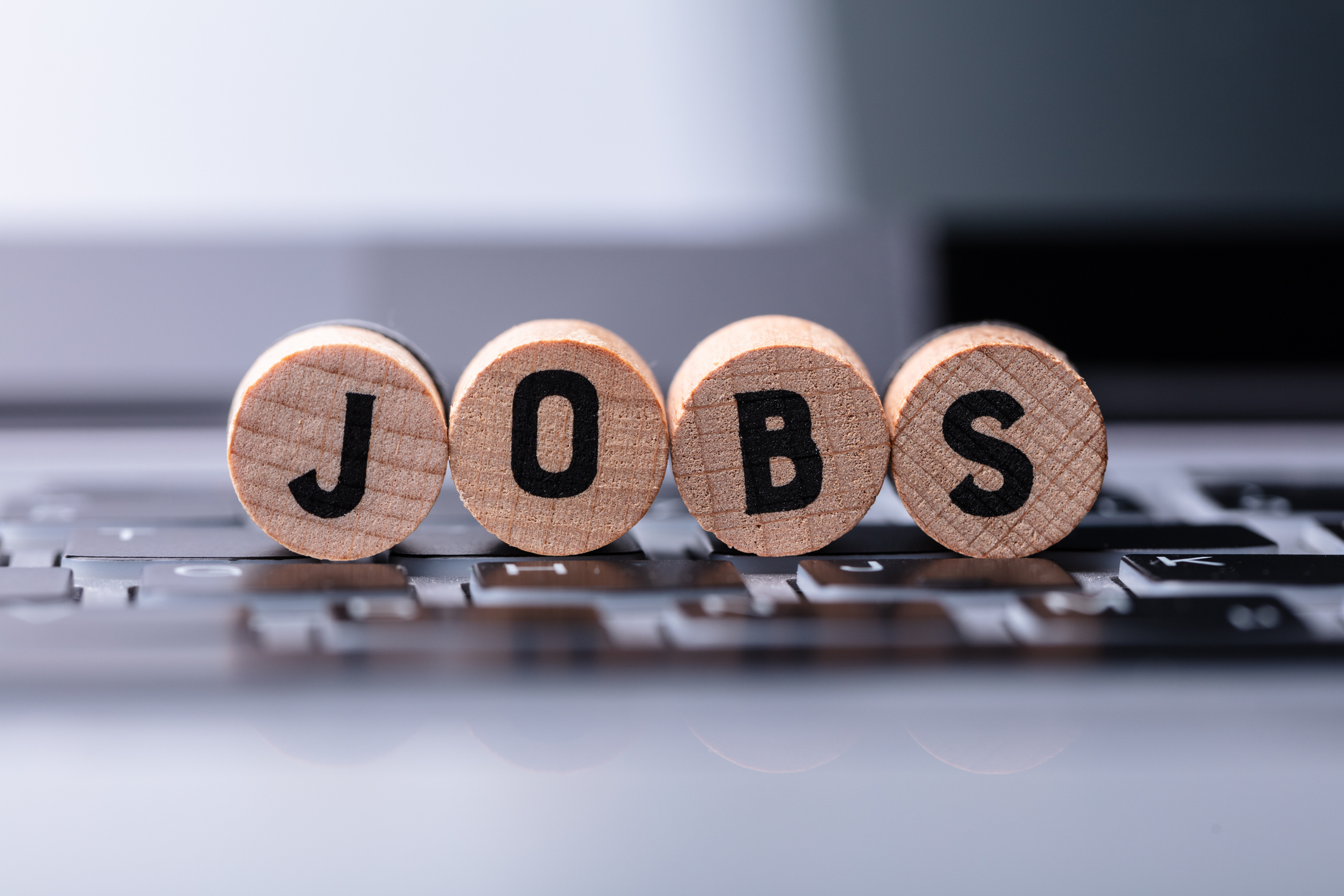Why You Should Have Defensive Stocks in Your Portfolio
Defensive stocks are worthy additions to any well-rounded portfolio, providing investors with stability in an uncertain market. Here's how they do it.


After rising 24% in 2023 and 23% in 2024, the S&P 500 Index declined by 4.5% during the first quarter of 2025, including a correction that took it down more than 10% from record highs.
Investors are wondering whether the bull market is intact. Recent price action is a good reminder to be ready for anything.
That includes allocating some space in your portfolio for defensive stocks.
From just $107.88 $24.99 for Kiplinger Personal Finance
Become a smarter, better informed investor. Subscribe from just $107.88 $24.99, plus get up to 4 Special Issues

Sign up for Kiplinger’s Free Newsletters
Profit and prosper with the best of expert advice on investing, taxes, retirement, personal finance and more - straight to your e-mail.
Profit and prosper with the best of expert advice - straight to your e-mail.
In his groundbreaking book on value investing, The Intelligent Investor, Benjamin Graham discusses the primary characteristics of defensive stocks.
They should be moderately priced, have a good record of paying dividends and be conservatively financed. These factors mean defensive stocks are well equipped to weather the vicissitudes of the stock market.
Defensive stocks can also produce stable returns, good income and long-term value for you.
What are defensive stocks in the stock market?
The typical defensive stock has three defining characteristics:
- a good history of dependable dividend growth;
- a conservatively financed balance sheet with little debt; and
- an inexpensive valuation.
Dividends. Companies that have a long history of dividend payments and have grown them over time tend to have stable price histories.
For example, the best dividend stocks for dependable dividend growth tend to fall less in bear markets. This works if the market believes the company will maintain the dividend, even while other stocks are tumbling.
Let's say that a stock has a stable history of dividend payments over an extended period of time. Also, let's assume the stock presently has an attractive dividend yield of 3.5%.
If its dividend payment rises by 5%, the market will tend to push the stock price higher by 5%, so as to maintain the same 3.5% dividend yield.
There is a more fundamental point about dividend-paying stocks that makes them defensive investments.
Companies normally can only pay dividends over a long period if they have positive earnings or strong free cash flow (FCF).
FCF is the money left over after expenses, interest on debt, taxes and long-term investments that are needed to grow the business have been paid.
In other words, they are fundamentally healthy.
At the same time, the best defensive stocks typically have low payout ratios. This means that no more than 50% to 60% of the company's earnings are paid as dividends.
This allows the company to reinvest its retained earnings for future growth.
Balance sheet. Another major trait of a good defensive stock pick is a conservative balance sheet. This means investors should stay away from certain types of stocks with the highest dividend yields.
Their share prices could be spiraling, making their yields rise and/or fall because they may have taken on large amounts of debt in order to pay out their dividends.
Another pitfall to avoid is a company that has issued too many shares. For example, some high-yield real estate investment trusts (REITs) can only afford their lofty dividends by constantly issuing new shares.
So, despite the high yield, the stock will not tend to do well over time.
Valuation. The third major characteristic of top defensive stocks is a cheap valuation.
Academic studies have shown that over long periods, stocks with low price-to-earnings (P/E) ratios and low price-to-book value (P/B) ratios do well over time.
What are drawbacks to buying defensive stocks?
One drawback of buying even the best defensive stocks is that they tend to generate conservative returns. They typically won't rise as much as other stocks during bull markets.
Of course, the opposite side is also true — they tend to not fall as much in bear markets.
Another drawback is that defensive stocks tend to be either in cyclical industries or low-growth arenas that aren't popular. The company might be profitable, but its earnings or sales growth rate could also be low.
And that is the conundrum for investors. The stock has an inexpensive valuation because of its defensive traits.
But it could be a cheap stock due to its slow growth rate, despite its stable dividends and conservative balance sheet.
What are examples of defensive stocks?
Here are a few examples of defensive stocks in today's market.
Old Republic International (ORI) is a large multi-line insurance company that has a 44-year history of annual dividend growth. And its dividends account for less than 40% of earnings.
Meanwhile, ORI stock has an inexpensive valuation of 12.3 times forward earnings, boasts a 2.9% dividend yield and has a conservatively financed balance sheet.
Chevron (CVX) is a very large oil and gas company that ended fiscal 2024 with $195.6 billion in revenue and $15 billion in free cash flow.
That FCF allows the company to pay an ample dividend, which has grown every year for the past 38 years.
As it stands, the blue chip stock now has an attractive 4.1% dividend yield. Its valuation is also cheap at less than 16.2 times forward earnings.
And Chevron finances its operations very conservatively, with just 10.4% net debt compared to its shareholders' equity.
HP (HPQ) is a profitable imaging and printing products company with related technology solutions and services. HPQ is a defensive stock for several reasons.
First, the company has paid a dividend for 35 years and has raised it in each of the past 15. Second, its valuation is attractive, with the tech stock trading at just 7.8 times forward earnings.
And HPQ is considered a defensive stock as its balance sheet is reasonably financed.
It produced $3.2 billion of free cash flow in 2024. This can be used to cover its dividends and continue to pay down the $6.4 billion of net debt on its balance sheet.
Related content
Profit and prosper with the best of Kiplinger's advice on investing, taxes, retirement, personal finance and much more. Delivered daily. Enter your email in the box and click Sign Me Up.

Mark R. Hake, CFA, is a Chartered Financial Analyst and entrepreneur. He has been writing on stocks for over six years and has also owned his own investment management and research firms focused on U.S. and international value stocks, for over 10 years. In addition, he worked on the buy side for investment firms, hedge funds, and investment divisions of insurance companies for the past 36 years. Lately, he is also working as Chief Strategy Officer for a tech start-up company, Foldstar Inc, based in Princeton, New Jersey.
-
 4 Great Tools to DIY Your Own Financial Plan
4 Great Tools to DIY Your Own Financial PlanSmart Savings Several tools picked out by Kiplinger that DIYers can use to make their own financial plan.
-
 The 7-Month Deadline That Sets Your Lifetime Medicare Premiums
The 7-Month Deadline That Sets Your Lifetime Medicare PremiumsUnderstanding Medicare enrollment is crucial, as missing deadlines can lead to permanent late enrollment penalties and gaps in coverage.
-
 Retirees Living in Portugal: You Need a Post-NHR Tax Strategy
Retirees Living in Portugal: You Need a Post-NHR Tax StrategyWhen your 10-year Non-Habitual Resident tax break ends, you could see your tax rate soar. Take steps to plan for this change well before the NHR window closes.
-
 If You're a U.S. Retiree Living in Portugal, Your Tax Plan Needs a Post-NHR Strategy ASAP
If You're a U.S. Retiree Living in Portugal, Your Tax Plan Needs a Post-NHR Strategy ASAPWhen your 10-year Non-Habitual Resident tax break ends, you could see your tax rate soar. Take steps to plan for this change well before the NHR window closes.
-
 Stocks Chop as the Unemployment Rate Jumps: Stock Market Today
Stocks Chop as the Unemployment Rate Jumps: Stock Market TodayNovember job growth was stronger than expected, but sharp losses in October and a rising unemployment rate are worrying market participants.
-
 The Delayed November Jobs Report Is Out. Here's What It Means for the Fed and Rate Cuts
The Delayed November Jobs Report Is Out. Here's What It Means for the Fed and Rate CutsThe November jobs report came in higher than expected, although it still shows plenty of signs of weakness in the labor market.
-
 Your Year-End Tax and Estate Planning Review Just Got Urgent
Your Year-End Tax and Estate Planning Review Just Got UrgentChanging tax rules and falling interest rates mean financial planning is more important than ever as 2025 ends. There's still time to make these five key moves.
-
 What Makes This Business So Successful? We Find Out From the Founder's Kids
What Makes This Business So Successful? We Find Out From the Founder's KidsThe children of Morgan Clayton share how their father's wisdom, life experience and caring nature have turned their family business into a respected powerhouse.
-
 Stocks Struggle Ahead of November Jobs Report: Stock Market Today
Stocks Struggle Ahead of November Jobs Report: Stock Market TodayOracle and Broadcom continued to fall, while market participants looked ahead to Tuesday's jobs report.
-
 Past Performance Is Not Indicative of Your Financial Adviser's Expertise
Past Performance Is Not Indicative of Your Financial Adviser's ExpertiseMany people find a financial adviser by searching online or asking for referrals from friends or family. This can actually end up costing you big-time.
-
 I'm a Financial Planner: If You're Not Doing Roth Conversions, You Need to Read This
I'm a Financial Planner: If You're Not Doing Roth Conversions, You Need to Read ThisRoth conversions and other Roth strategies can be complex, but don't dismiss these tax planning tools outright. They could really work for you and your heirs.